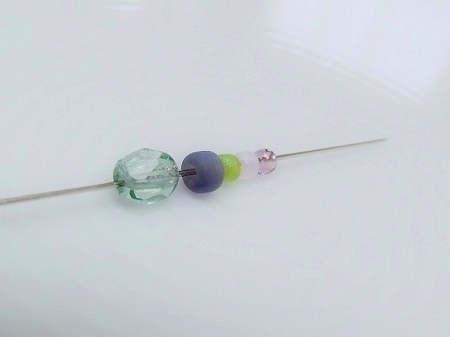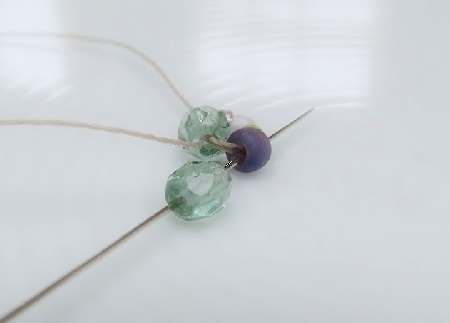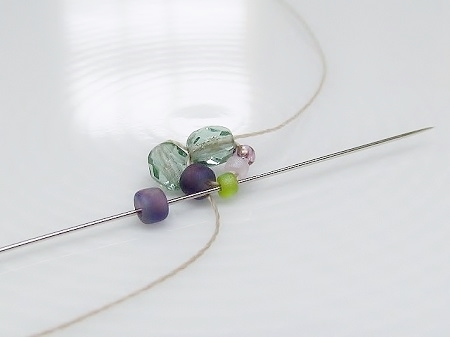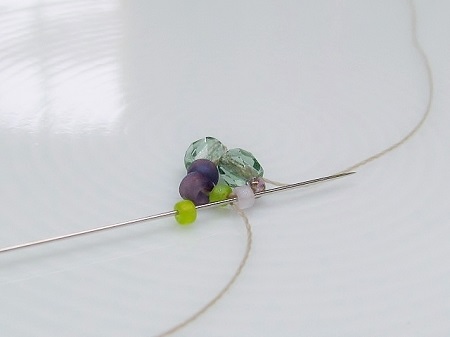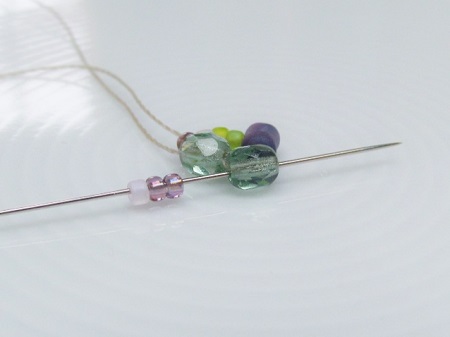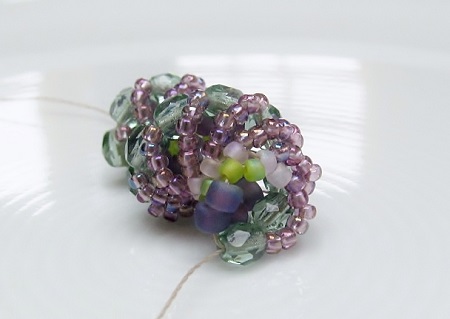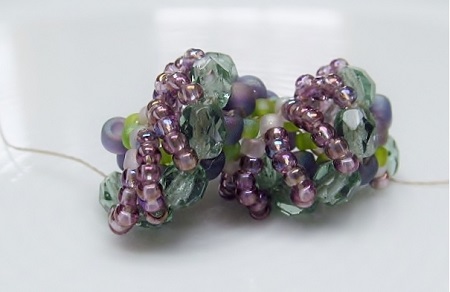LEARN and CREATE – the Dutch spiral - part 1 Wednesday, 5 April 2017
Light and airy, the Dutch spiral has the structure of a peyote rope, but it has one of its sides falling in loose loops. Make a small loop version for daytime and a strikingly stunning wide one for the evening.

Challenge:
- Understanding the thread path and the color scheme of the Dutch spiral. Unlike the peyote spiral the next bead you pick up is always in the same color as the bead you just exited.
Observations:
- You may vary the length of the loose loops at will and thus work gradually from small to large and vice versa
- Moreover, you may choose for a narrower or a wider "fixed" sewn part.
Supplies for the Dutch spiral:
- needle and thread
- scissors and beading mat
- for the “fixed” sewn part:
- 4x4 mm Czech fire-polished beads
- size 8/0 seed beads
- size 11/0 seed beads in two colors: fixed 11/0 A and fixed 11/0 B
- for the loose loops:
- size 11/0 seed beads: loose 11/0
Weaving instructions for a tapered Dutch spiral:
- to form a tapered point, we let the loose 11/0 “grow”, that is why in each round we pick up an extra loose 11/0 bead (round 1 = 1 loose 11/0, round 2 = 2 loose 11/0, round 3 = 3 loose 11/0 etc.)
- therefore make in the color scheme you want to keep on “growing” piles in order for you to work smoothly
- to create the first round:
- take a length of thread, pick up 1x 4 mm bead, 1x seed bead 8/0, 1x fixed 11/0 A, 1x fixed 11/0 B and 1x loose 11/0
- go a second time through all the beads and go through an extra bead to create a circle
- You will exit from a 4 mm bead
- second round:
- *pick up 1x 4x4 mm, go through the 8/0 and tighten so that the new bead fits partially in between the previous 4 mm and the 8/0
- as you end with a 8/0, you pick up a 8/0, go through the next 11/0 A bead and tighten the thread
- you end with a 11/0 A beads, so pick up a 11/0 A and go through a 11/0 B
- you end with a 11/0 B, so pick up a 11/0 B** as well as 2 loose 11/0
- as these are the last beads forming the loose loop, you skip the loose 11/0 from the previous round, make a step-up and go through the second 4 mm bead
SEE - part 2




